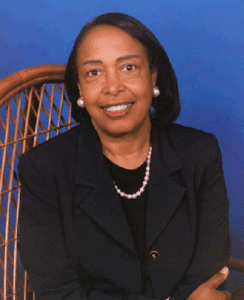
Patricia Era Bath
*Patricia Era Bath was born on this date in 1942. She was a Black ophthalmologist, inventor, and academic.
Bath is the daughter of Rupert and Gladys Bath. Her parents encouraged her academically as a child in Harlem, NYC. Her father, an immigrant from Trinidad, was a newspaper columnist for the Amsterdam News, a merchant seaman, and the first Black man to work for the New York City Subway as a motorman. Her mother's descendants were African slaves and Cherokee.
As a teenager, Bath won a National Science Foundation Scholarship while attending Charles Evans Hughes High School; this led her to a research project on cancer at Yeshiva University and Harlem Hospital Center that piqued her interest in medicine. In 1960, she won the "Merit Award" of Mademoiselle magazine for contributing to the project. 1964, Bath received her Bachelor of Arts in chemistry from New York's Hunter College. 1968, she received her doctoral degree from Howard University College of Medicine. At Howard, she was president of the Student National Medical Association and received fellowships from the National Institutes of Health and the National Institute of Mental Health.
Bath interned at Harlem Hospital Center and served as a fellow at Columbia University from 1968 to 1970. She also became aware that eye care practice was uneven among racial minorities and poor populations, with a much higher incidence of blindness among her Black and poor patients. Determined that, as a physician, she would help address this issue, she persuaded her professors from Columbia to operate on blind patients at Harlem Hospital Center, which had not previously offered eye surgery, at no cost. Bath pioneered the worldwide "community ophthalmology" discipline, a volunteer-based outreach to bring necessary eye care to under-served populations.
She served her residency in ophthalmology at New York University from 1970 to 1973, the first Black to do so in her field. Bath served briefly as an assistant professor at Jules Stein Eye Institute at UCLA and Charles R. Drew University of Medicine and Science. In 1978, she co-founded the American Institute for the Prevention of Blindness. In 1983, she became the head of a residency in her field at Charles R. Drew, the first woman ever to head such a department. 1993, she retired from UCLA, making her the first woman on its honorary staff. She has been a professor of Ophthalmology at Howard University's School of Medicine and Telemedicine and Ophthalmology at St. George University. She was among the co-founders of the King-Drew Medical Center ophthalmology training program. She has lectured internationally and authored over 100 papers.
Bath holds four patents in the United States and is the first black woman doctor to receive a patent for a medical purpose. Her Laserphaco Probe is used to treat cataracts. In addition to holding four patents, she is the founder of the American Institute for the Prevention of Blindness in Washington, D.C. Three of Bath's four patents relate to the Laserphaco Probe. In 2000, she was granted a patent for a method she devised for using ultrasound technology to treat cataracts.
Bath has broken ground for women and African Americans in some areas. Before Bath, no woman had served on the Jules Stein Eye Institute staff, headed a post-graduate training program in ophthalmology, or been elected to the honorary staff of the UCLA Medical Center (an honor bestowed on her after her retirement). Before Bath, no black person had served as a resident in ophthalmology at New York University, and no black woman had ever served on staff as a surgeon at the UCLA Medical Center. Bath has been honored by two of her universities. Hunter College placed her in its "Hall of Fame" in 1988, and Howard University declared her a "Howard University Pioneer in Academic Medicine" in 1993.
Patricia Era Bath died on May 30, 2019, at the University of California, San Francisco Medical Center, from cancer-related complications at age 76.